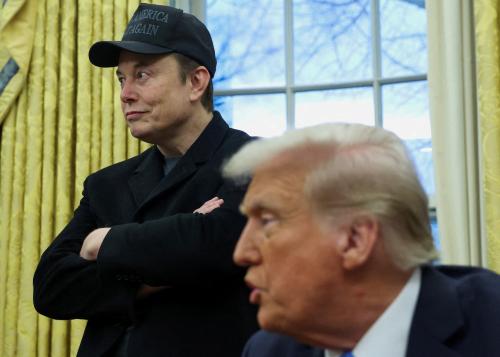Introduction
With the economy rocked by mortgage defaults, illiquidity in financial markets, a falling dollar, and declining consumer confidence, fiscal matters have been placed on the back burner to some extent by policy makers and commentators. However, the fiscal problems facing the country not only won’t go away by themselves, but are actively getting worse with the passage of time and continuing inaction. This paper discusses the most recent Congressional Budget Office (CBO) baseline projection, and uses it to examine the causes of the fiscal decline since 2000 and the medium- and longer-term fiscal outlook.
The latest Congressional Budget Office analysis projects the unified budget deficit at $357 billion in fiscal year 2008, or 2.5 percent of GDP (CBO 2008b). Although this figure includes the costs of the stimulus package already passed into law, the actual unified deficit will likely be larger than the projection due to a combination of legislative actions like additional supplemental bills for Iraq and Afghanistan and the fact that the economy is weaker than forecasted. The unified budget, however, hides important compositional effects. The federal budget can be divided into Social Security, Medicare and government retirement programs on the one hand, and the rest of the government on the other. The first group of programs is experiencing temporary cash-flow surpluses but faces long-term deficits. The deficit in the rest of the budget is projected to be $617 billion in 2008, or 4.3 percent of GDP.
Over the longer run the budget could take two very different paths. If Congress does not increase discretionary spending in real terms and if it pays for all new proposals, including any extensions of the tax cuts enacted starting in 2001 and alternative minimum tax relief, the medium-run deficits would be modest. The large projected increases in health and retirement spending would be offset by discretionary spending falling to historically unprecedented low levels as a share of GDP and taxes rising to historically unprecedented levels as a share of GDP. If instead Congress extends the tax cuts and provides AMT relief without paying for them and grows discretionary spending at a more rapid rate, then the medium-run and especially the longrun fiscal challenge will be daunting.
There is no single “correct” method for decomposing the short-run or longer-run deficit into its component causes. Aaron (2007) and the Congressional Budget Office (2007) have cited projected increases in health spending as the primary cause of the long-run deficit. Another explanation of the long-run deficit is the legislation enacted since 2001. According to the Congressional Budget Office, increased spending and reduced taxes enacted since 2001 will worsen the fiscal balance by $967 billion in fiscal year 2008, or 6.8 percent of GDP. Regardless of the cause, the solution to the fiscal gap remains the same: a combination of increased revenues and reduced spending.
The rest of the paper discusses these issues in more detail. Section II looks at the fiscal deterioration since 2000. Section III examines the 10-year budget outlook. Section IV looks at the long-term situation. Section V is a short conclusion.
The Brookings Institution is committed to quality, independence, and impact.
We are supported by a diverse array of funders. In line with our values and policies, each Brookings publication represents the sole views of its author(s).





